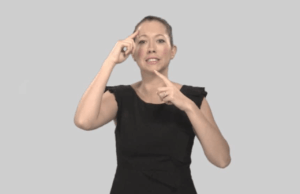 When you ask people to reflect on their own experience, many people say that it is full of words; they talk to themselves almost constantly. But what is this ‘voice in the head’? What is it for, how does it vary from person to person, and how can we best study it? Tonight Charles, Ben and our collaborator Jo Atkinson (UCL) join Claudia Hammond in the Reading Room at Wellcome Collection for Whisperings Within – an event examining how we think and what it means for our sense of self and world.
When you ask people to reflect on their own experience, many people say that it is full of words; they talk to themselves almost constantly. But what is this ‘voice in the head’? What is it for, how does it vary from person to person, and how can we best study it? Tonight Charles, Ben and our collaborator Jo Atkinson (UCL) join Claudia Hammond in the Reading Room at Wellcome Collection for Whisperings Within – an event examining how we think and what it means for our sense of self and world.
One of the central themes of the evening will be the nature of inner speech in people who are deaf. On the model developed by L.S. Vygotsky, inner speech is irreducibly social in origin. The ‘private speech’ that children use in order to direct behavior (for example, while playing by themselves) develops out of social interactions with parents and caregivers. Over time, it is gradually internalized to form verbal thought or inner speech. What’s the story, then, for a non-hearing child, who doesn’t ever use or experience spoken language? Does she develop a kind of ‘inner sign’ that plays the same role in directing thought and behavior as ordinary inner speech? What is her inner speech/sign actually like?
Similar questions arise in relation to the issue of voice-hearing in deaf people. 52-59 % of deaf people with a diagnosis of schizophrenia report experiences of auditory hallucinations (Schonauer et al, 1998; du Feu, 1999). But are these experiences really experiences of sounds? As recent research by Jo Atkinson has shown, deaf people describe a range of communicative experiences under the term ‘voices’, that can include visual imagery of sign-language or of disembodied lips. As the panel will explore this evening, what kinds of ‘voice’ experiences deaf people report seems to depend on their early experience of language.
Whisperings Within is a British Sign Language interpreted event. To coincide with it, we have launched a British Sign Language interpretation of our Frequently Asked Questions about hearing voices, which is available here.
Further reading
Atkinson, J.R., Gleeson, K., Cromwell, J. O’Rourke, S. (2007). ‘Exploring the Perceptual Characteristics of Voice-Hallucinations in Deaf People.’ Cognitive Neuropsychiatry, 12(4), 339-361.
Charles Fernyhough, ‘Do Deaf People Hear an Inner Voice?’, Inner Voices, Psychology Today.
Jemima Hodgkinson, ‘Can Deaf People Hear Voices?’ Mosaic
